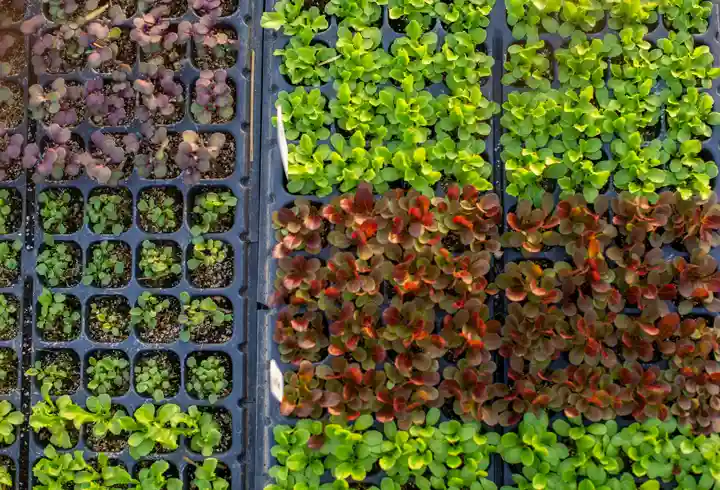As concerns develop around climate alteration and delicate nourishment frameworks, “regenerative agriculture” is developing as an all-encompassing arrangement.
Regenerative hones point to optimize assets on the cultivate while modifying soil wellbeing and sequestering carbon. Within the handle, they upgrade biodiversity and offer assistance to make horticulture more versatile and beneficial long-term.
Recent estimates found that transitioning global cropland to regenerative methods could store an additional 1-1.5 gigatons of carbon annually— equivalent to our current yearly emissions.
Additionally, healthier soil holds more nutrients and water, reducing fertilizer and irrigation needs. As extreme weather threatens more conventional crops, regenerative techniques prove far better equipped to withstand climate stresses.
Regeneration also positively impacts rural communities and global food security. Higher organic matter in cropland boosts fertility and moisture retention, thereby increasing yields over decades rather than depleting the land.
Meanwhile, diversifying operations cuts risks for farmers reliant on singular harvests or commodity pricing fluctuations. These combined benefits are driving serious interest from growers, consumers, policymakers, and investors seeking impactful sustainability solutions.
Building Soil Health and Carbon Sequestration with Regenerative Agriculture
Soil is a farm’s most valuable asset, yet poor practices have caused carbon levels to plummet in fields worldwide. Regenerative agricultural methods rebuild this carbon through diversified crop rotations, cover cropping, reduced tillage, and grazing complementary livestock.
Microbes feeding off plant residues create stable soil aggregates that store carbon long-term. No-till practices avoid disturbing these carbon-rich structures.
Companion planting utilizes nitrogen-fixing green manures to replenish soil fertility naturally while sequestering carbon through deep root systems. Perennial grasses and trees in silvopasture systems further enrich soil carbon profile and water retention.
The Rodale Institute’s famous Farming Systems Trial showed regenerative systems can sequester up to 3 tons of carbon annually per acre—equivalent to removing 4-6 cars from roads annually.
Researchers at Kansas State found that no-till fields held 27% more carbon after 20 years than conventionally tilled soil.
Carbon drawdown through regenerative soil health practices presents an immense opportunity for mitigating emissions.
Enhancing Farm Resilience and Biodiversity
The diversity of plants and animals is key to regenerative operation resilience. Monocultures are highly susceptible to crop failures from stresses like drought, disease or extreme weather made more common by climate change.
Mixed perennial and annual plantings attract beneficial predators to naturally manage pests. They also provide habitat and fodder for pollinators and grazing livestock.
Grass-fed ruminants cycle nutrients through diverse pastures that build soil organic matter 13-42% faster than monocrops alone. Their manure also fertilizes without synthetic amendments.
Well-managed rotational grazing increases grassland carbon storage by up to 30%, with deep-rooted grasses preventing erosion. Regenerative farms shelter countless terrestrial and aquatic species vital for balanced ecosystems.
Increased biodiversity fortifies agroecosystems against volatility. The Rodale study again found regenerative crop yields matched or surpassed conventional outputs even during drought years through natural resilience, despite using no irrigation.
Multi-strata silvopasture systems further buffer farms from temperature and rainfall fluctuations through shelterbelts. Regeneration proves a superior adaptation strategy for agriculture facing an uncertain climate future.
Economic and Community Benefits of Regenerative Agriculture
Regenerative agriculture offers financial stability through diverse revenue streams. Livestock, value-added products, and ecosystem services payments provide multiple profit centers less vulnerable to market swings.
Cost-savings also accrue from natural soil fertility reducing synthetic fertilizer reliance by up to 90%. Savings on irrigation, fuel, and repairs further boost margins as soil health rises.
The Rodale experiment again showed cumulative organic matter increases boosted corn and soybean yields by up to 80% and 330% respectively over 30 years — far outpacing chemical-reliant fields experiencing yield decline. Benefits multiply across generations as fertility and water retention enhance productivity long after initial investments.
For farmers and rural communities, regeneration secures sustainable livelihoods for decades ahead.
By stewarding ecosystem services, regenerative agriculture also sequesters value through carbon markets and payments for hydrologic benefits.
Regenerative grazing preserves open spaces and maintains pastoral vistas that boost property values for communities. Agritourism expands economic impact through on-farm education targeting consumers seeking sustainably grown food.
Regenerative practices promise economic justification far beyond emissions credits alone by uncovering farming’s true potential for enduring prosperity.
Their wide-ranging social and ecological advantages are attracting bipartisan political support to transform agriculture on a landscape scale. With multiple win-win outcomes, a future of regenerative operations seems inevitable.
Adoption Barriers and the Path Forward
Despite clear agronomic, financial, and environmental benefits long-term, initial costs and risks present regenerative agriculture adoption barriers. Transition requires time and experimentation to establish deep-rooted perennials and optimize new management-intensive systems.
Upfront investments in fencing, watering infrastructure, and controlled grazing plans introduce short-term expenses conventional systems avoid.
Education addressing these challenges and demonstrating multi-year impacts could accelerate farmer buy-in. Scaling financial and technical assistance incentivizes early transition adopters. Purchasing commitments for sustainably grown commodities at premium prices rewards those pioneering regeneration. Public policy changes phasing out subsidies for chemical inputs would also level playing fields.
Public-private partnerships already aid the transition through applied research bridging science and practice. Additional funding here could streamline knowledge exchange accelerating adoption cycles.
Carbon banking and outcome-based conservation programs further aid transition risks. With determination and cooperation across sectors, visionary politicians and business leaders can transform our entire food system to regeneration within a generation.
In conclusion, the potential environmental, social, and economic promise of regenerative agriculture makes widespread adoption crucial for climate resilience and global sustainability.
With persistent coordinated efforts addressing transition barriers, this holistic solution affords widespread hope of reversing soil decline, climate change, and food insecurity at an unprecedented scale through symbiosis with nature.
Our collective future depends on the widespread cultivation of regenerative wisdom and care for the lands providing for all humanity.



